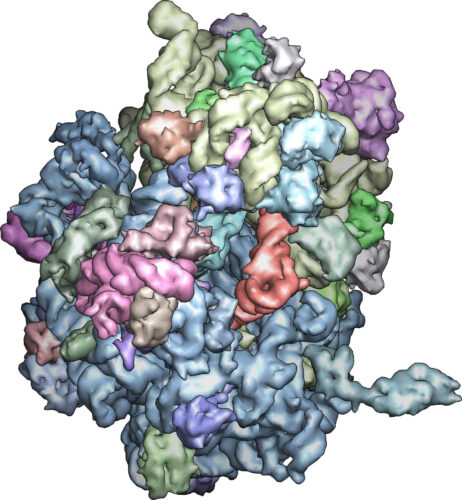Source: Image Courtesy of NIH Image Gallery.
Since its inception in the 2010s, genome editing has been revolutionizing biotechnology, with methods like CRISPR/Cas9 empowering scientists with “genetic scissors” that allow them to make remarkably precise edits to DNA—the genetic instructions in cells that control cell function, development, and reproduction.
This technology has widespread applications, from engineering solutions to genetic diseases to combating globally threatening plant pathogens. However, CRISPR/Cas9 is greatly limited by its inability to distinguish between genetic sequences that repeat several times throughout the genome, which occurs often. The Isaacs Lab at Yale University has discovered a powerful method to uniquely alter the genetic address of repeated genetic sequences. This method of “filtered editing” allows CRISPR to identify and edit specific sites of repeated sections of DNA.
For Felix Radford, a graduate student at Yale and the first author of a recently published Nature Communications article on filtered editing, this discovery has been a long time coming. “As an undergrad taking molecular biology, I started to think more about biology as a technology,” Radford said. “Previously, I was thinking about biology as various processes in life, in the human body, but these very complicated systems started to remind me more of how computers work.”
Radford’s view of biology as a tool to facilitate creative engineering was foundational to his interest in synthetic biology and ultimately led him to Yale professor of TKTK Farren Isaacs’ lab as a graduate student. “When I first joined the Isaacs Lab, my initial project was to engineer the ribosome, a molecular machine central to the function of all living organisms that are responsible for the synthesis of proteins or protein biomaterials,” Radford said. But he quickly ran into an issue—even in bacteria, which generally have much less repetitive genomes than humans, their genomes contained seven repeated copies of the ribosomal DNA. CRISPR/Cas9 was unable to distinguish the repeated sites of ribosomal DNA, preventing Radford from making the edits he wanted.
“It’s like on the computer—you find a string that you want to edit in a sequence. How do you search for that and find it?” Radford said. “It’s like Ctrl-F in the genome, but we have these repeated sequences that will lead you astray.”
Radford needed a solution. So he turned to self-splicing introns. These are RNA sequences that do not code for proteins and can excise themselves from exons (segments of RNA that do code for proteins). “You can put them into an RNA, and they will cut themselves out, leaving only the sequence that you want to edit remaining,” Radford said.
DNA segments encoding self-splicing introns can be inserted into the genome to distinguish one repetitive site from another, providing a unique genetic address for CRISPR to recognize and target that site. When the DNA is transcribed into RNA, the self-splicing introns cut themselves out of the RNA strand and stitch together the gap. This solution was incredibly exciting to the Isaacs Lab since this tool would allow them to edit these repetitive sequences, which had previously been exceptionally difficult to target.
After the initial discovery, Issacs posed an interesting question to Radford: what if he expanded this method to modify many sites at once instead of just one site in the ribosome? “To do that, I needed to have different types of introns that could work in parallel,” Radford said. “We ended up combining two different introns into one, and it worked in the same way as the original intron.” This only widened the door to applications of this technology.
“One application of this is that these repetitive genetic elements are found in many different organisms,” Radford said. Repetitive genetic elements comprise over 50 percent of the human genome. The ability to specifically edit these repetitive sequences offers great potential for studying and combatting genetic diseases.
Another application that the Isaacs Lab is readily exploring is the use of filtered editing to alter ribosomes and translation factors in the cell, repurposing cells to manufacture new sequence-defined polymers, proteins, and biomaterials. “This can be very important in utilizing biology as a means to evolve new materials and medicines,” Radford said.
As for Radford’s future, he is interested in applying this technique to new problems. “In science, when you have new techniques, they open up a lot of possibilities that were not possible before,” Radford said. “I’m curious to see where this goes, to see what new capabilities are available now that we can do this.”

